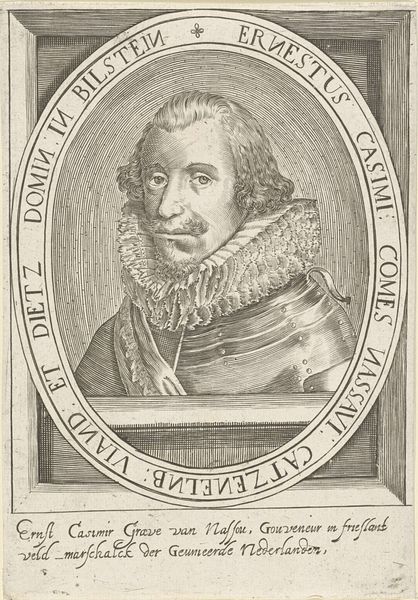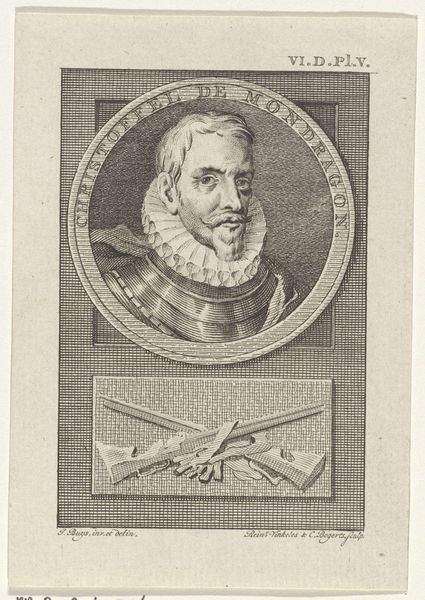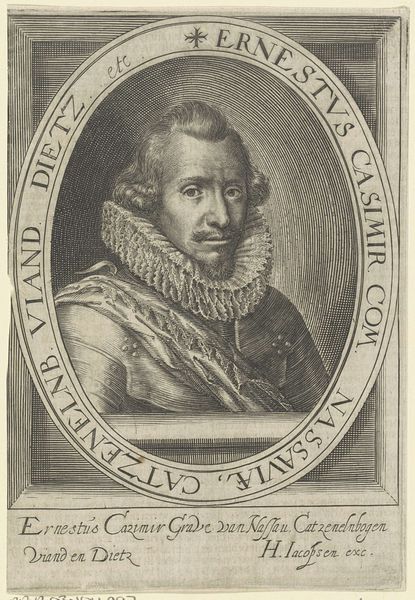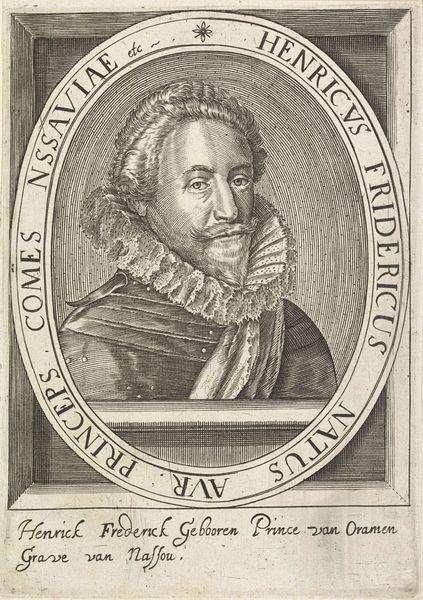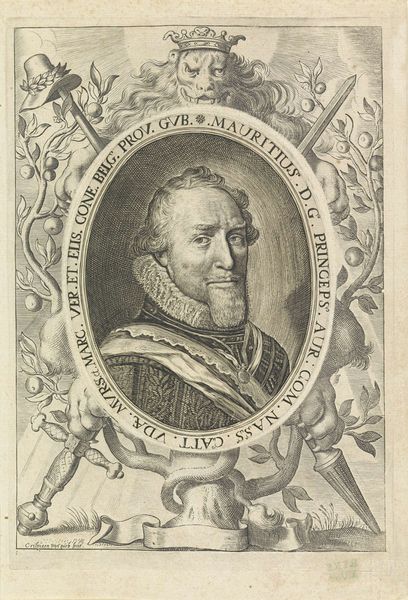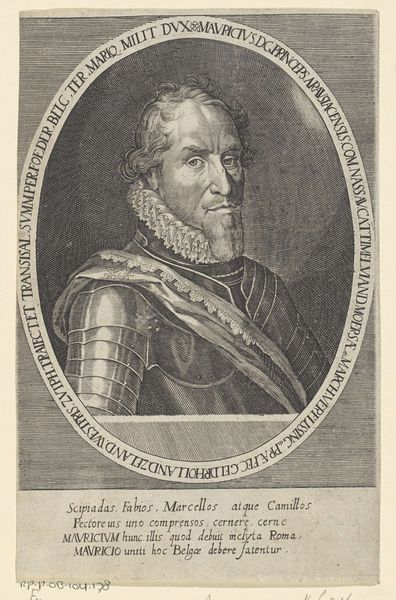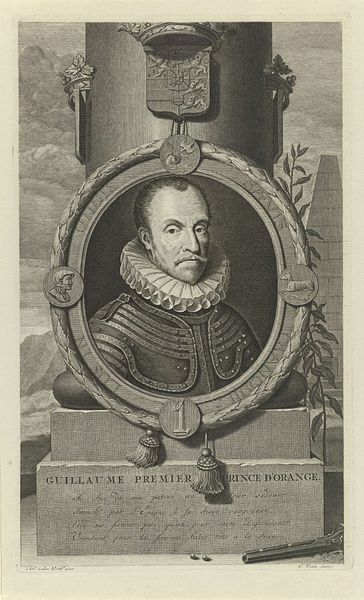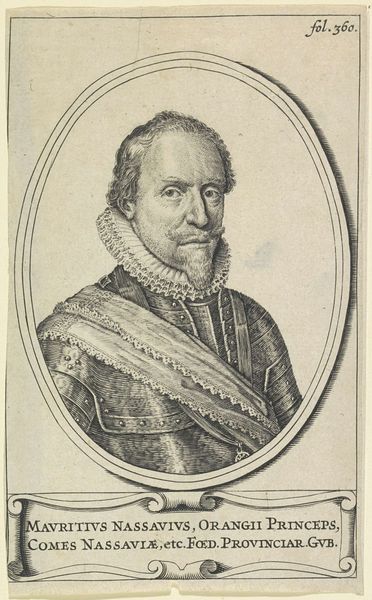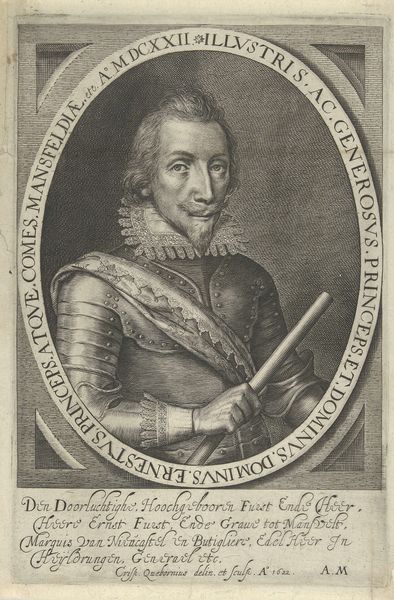
Portret van Maurits, prins van Oranje, op 41-jarige leeftijd 1608
0:00
0:00
hendrickhondiusi
Rijksmuseum
print, engraving
#
portrait
#
baroque
# print
#
old engraving style
#
northern-renaissance
#
engraving
#
historical font
Dimensions: height 191 mm, width 124 mm
Copyright: Rijks Museum: Open Domain
Hendrick Hondius I created this print of Maurits, Prince of Orange, in 1608. Note the oval frame, an emblem of status, bearing inscriptions declaring Maurits’s titles and territories, underscoring his authority. This visual language echoes classical portraiture, where framing devices similarly elevated the subject. Think of Roman emperor busts encircled by laurel wreaths, symbols of victory and divine favor. This motif reappears throughout the Renaissance, seen in painted portraits where elaborate borders signify the sitter’s nobility and cultural significance. The conscious revival of classical forms speaks to a deep-seated human impulse: to connect the present with a glorious past. Such symbols tap into a collective memory, a desire to legitimize power and lineage through visual association, and to instill a sense of awe. Like an actor on a stage playing an age-old role, this adds layers of meaning for viewers. The cyclical return of these motifs reveals a non-linear progression of history, where symbols are reborn, repurposed, and imbued with new significance across time.
Comments
No comments
Be the first to comment and join the conversation on the ultimate creative platform.
